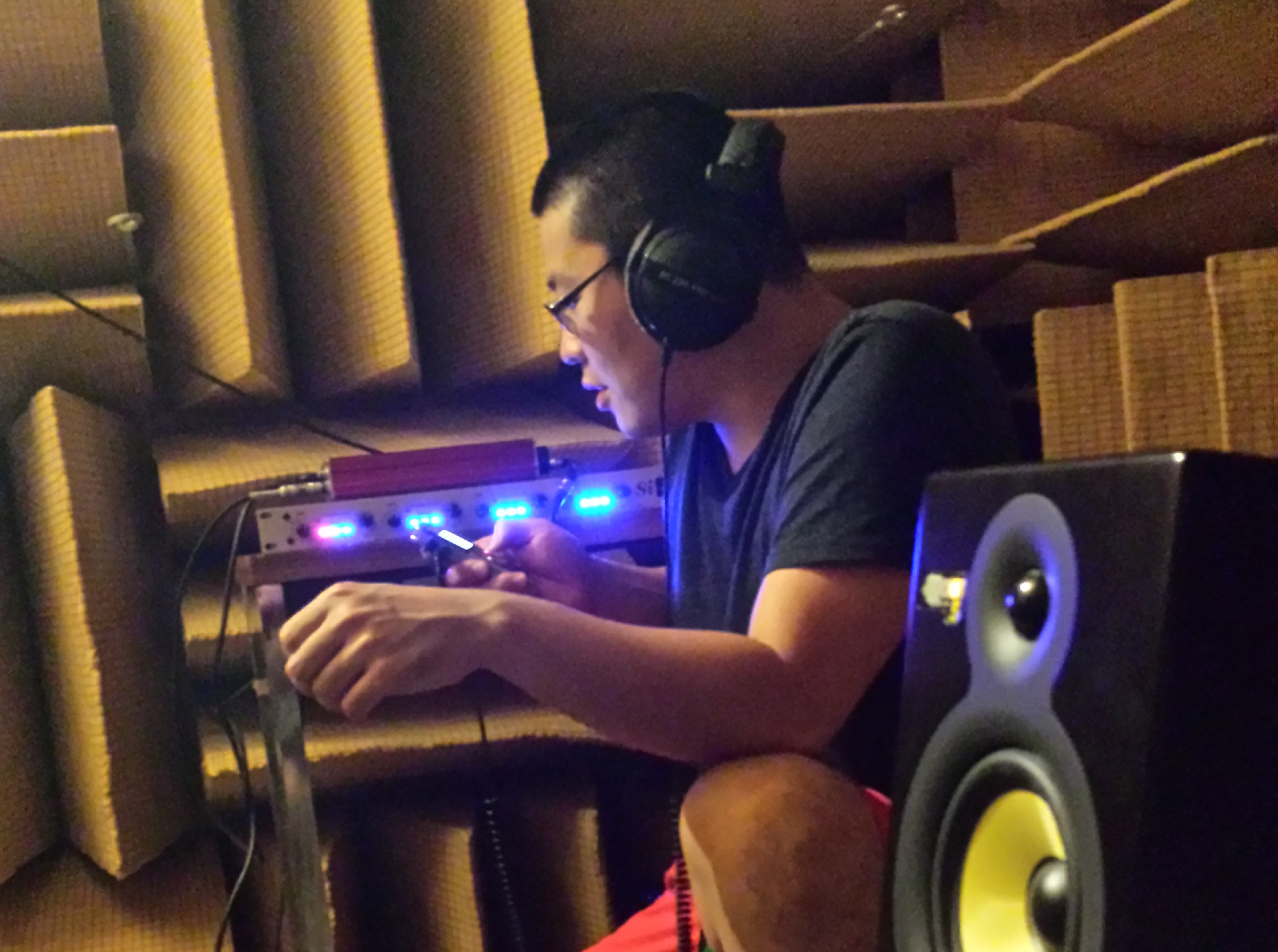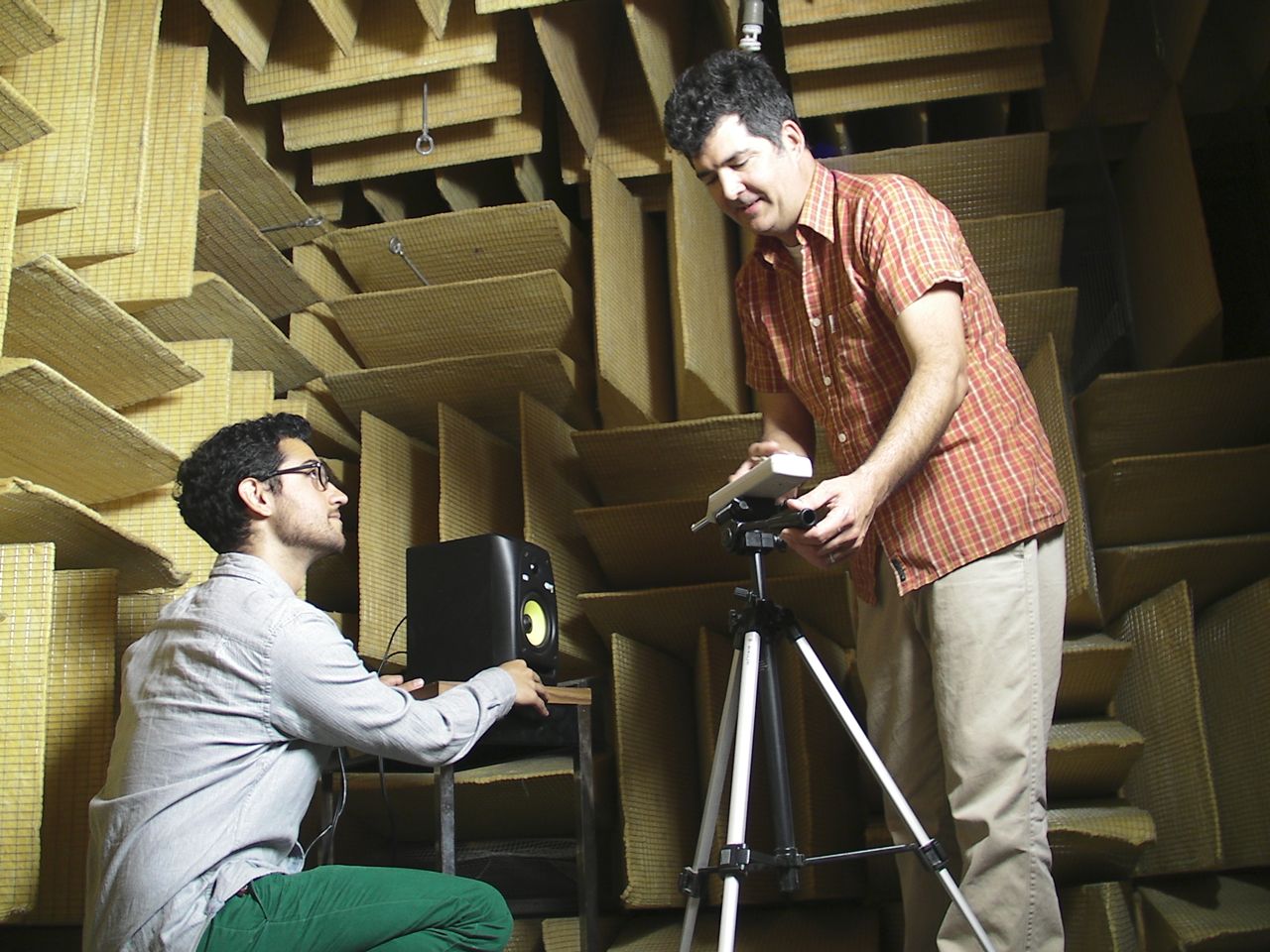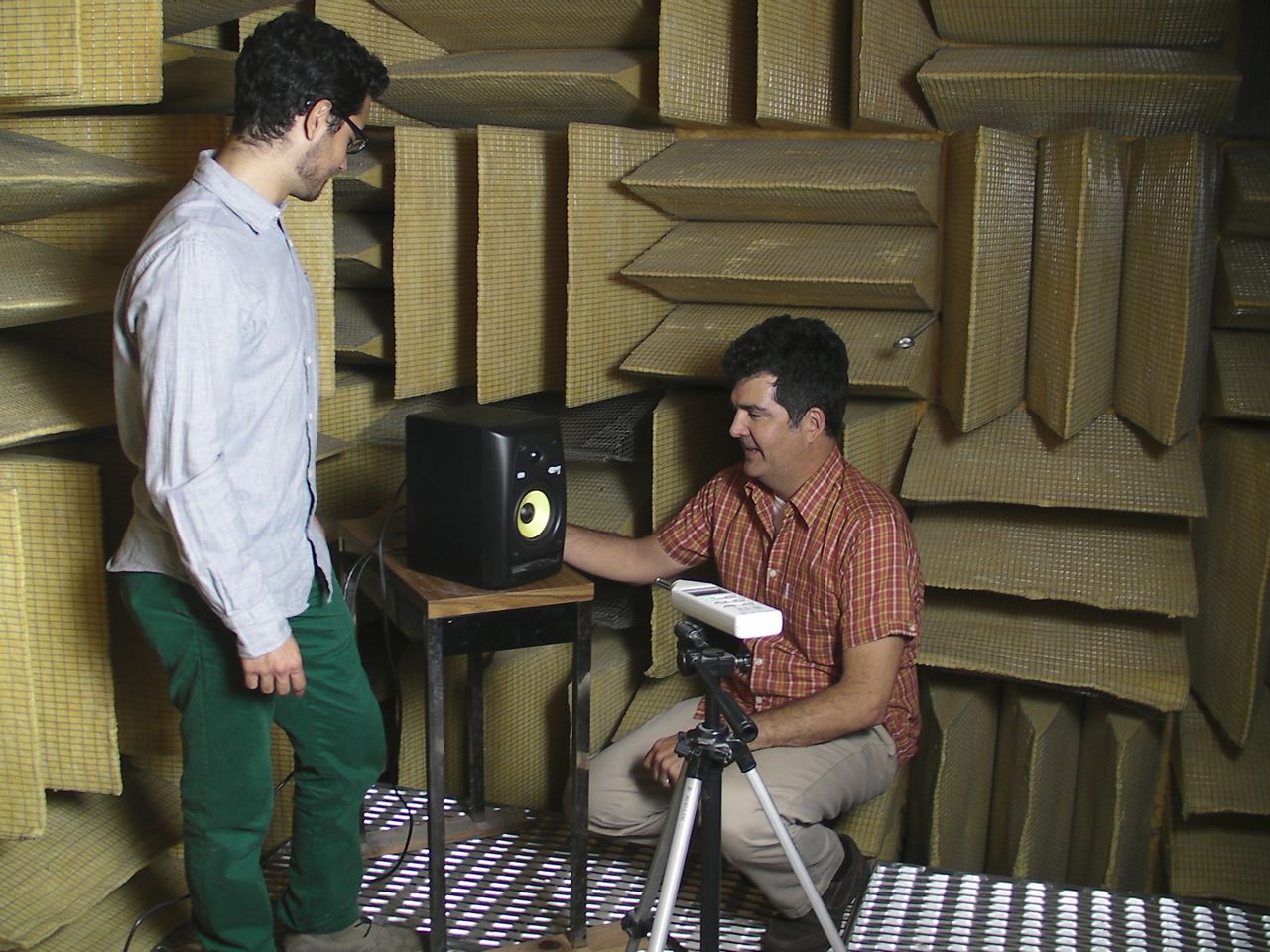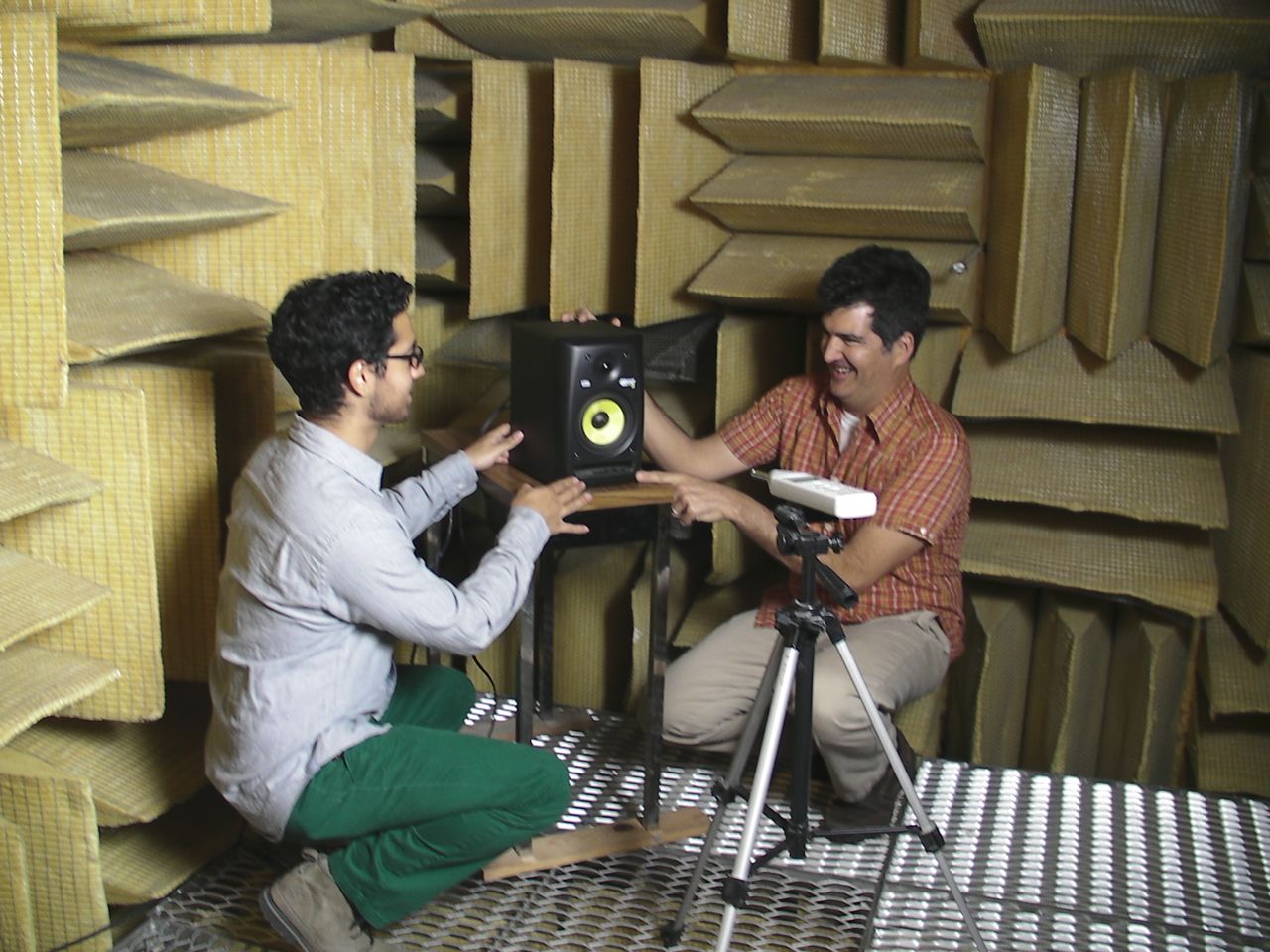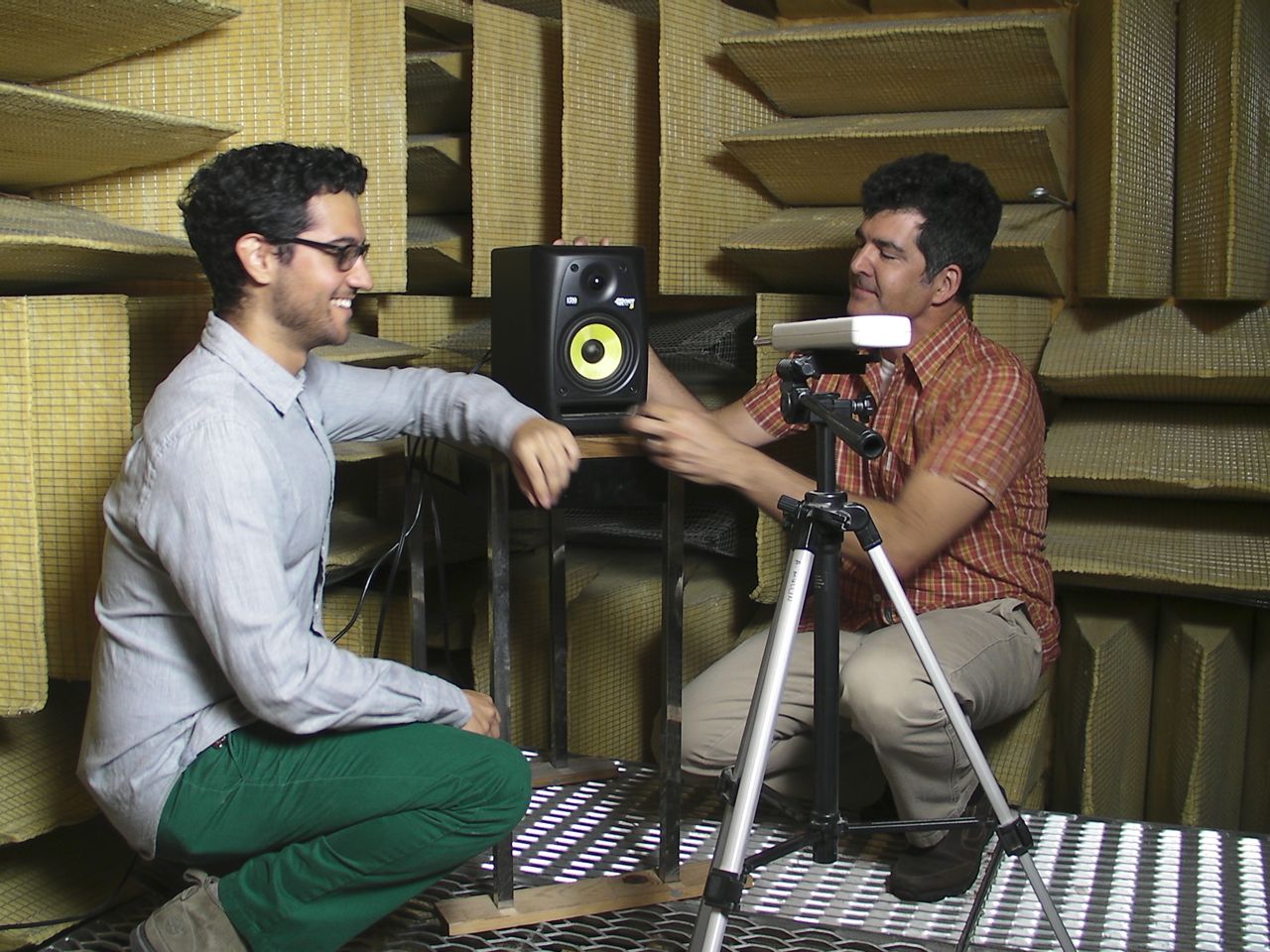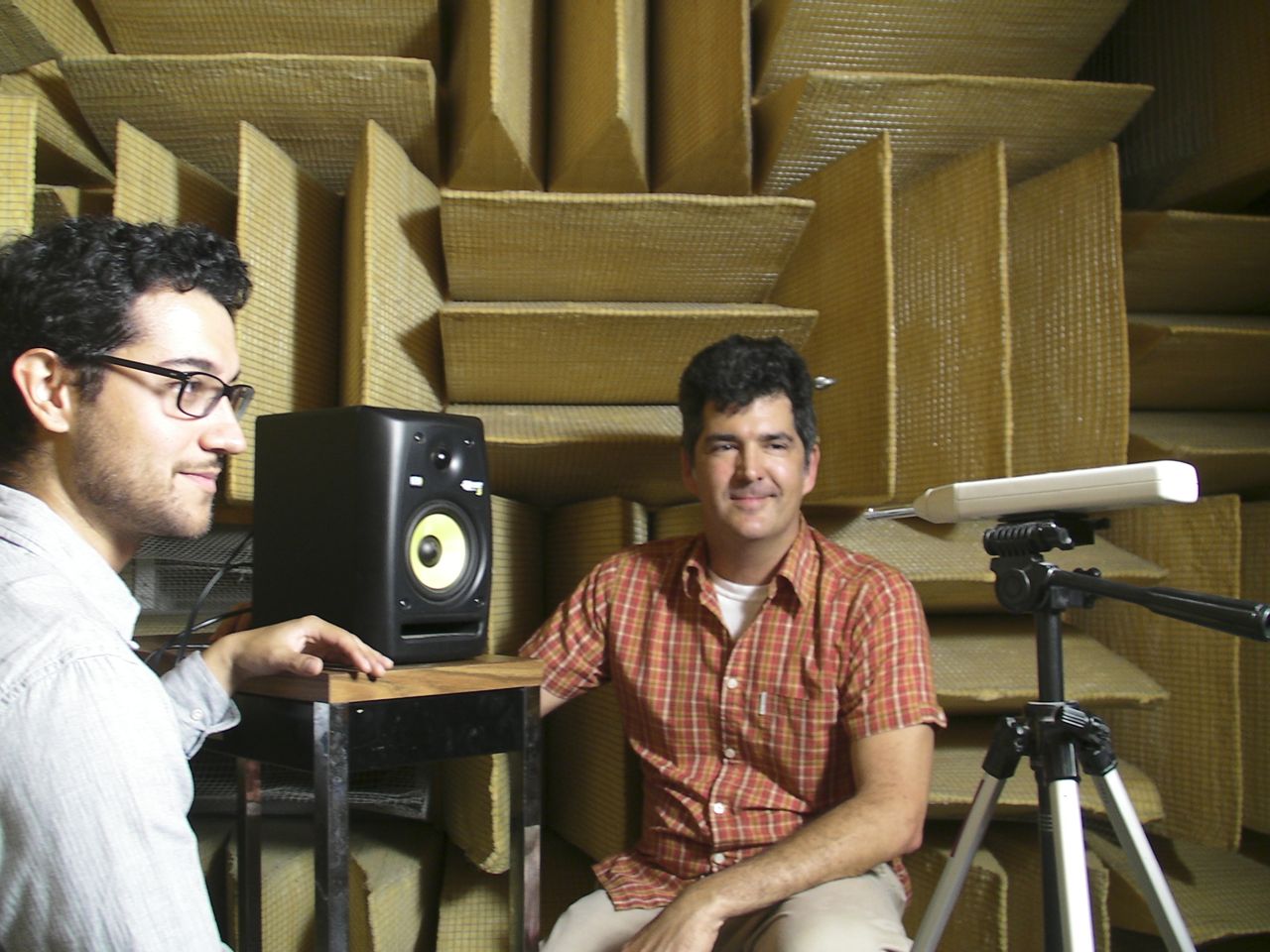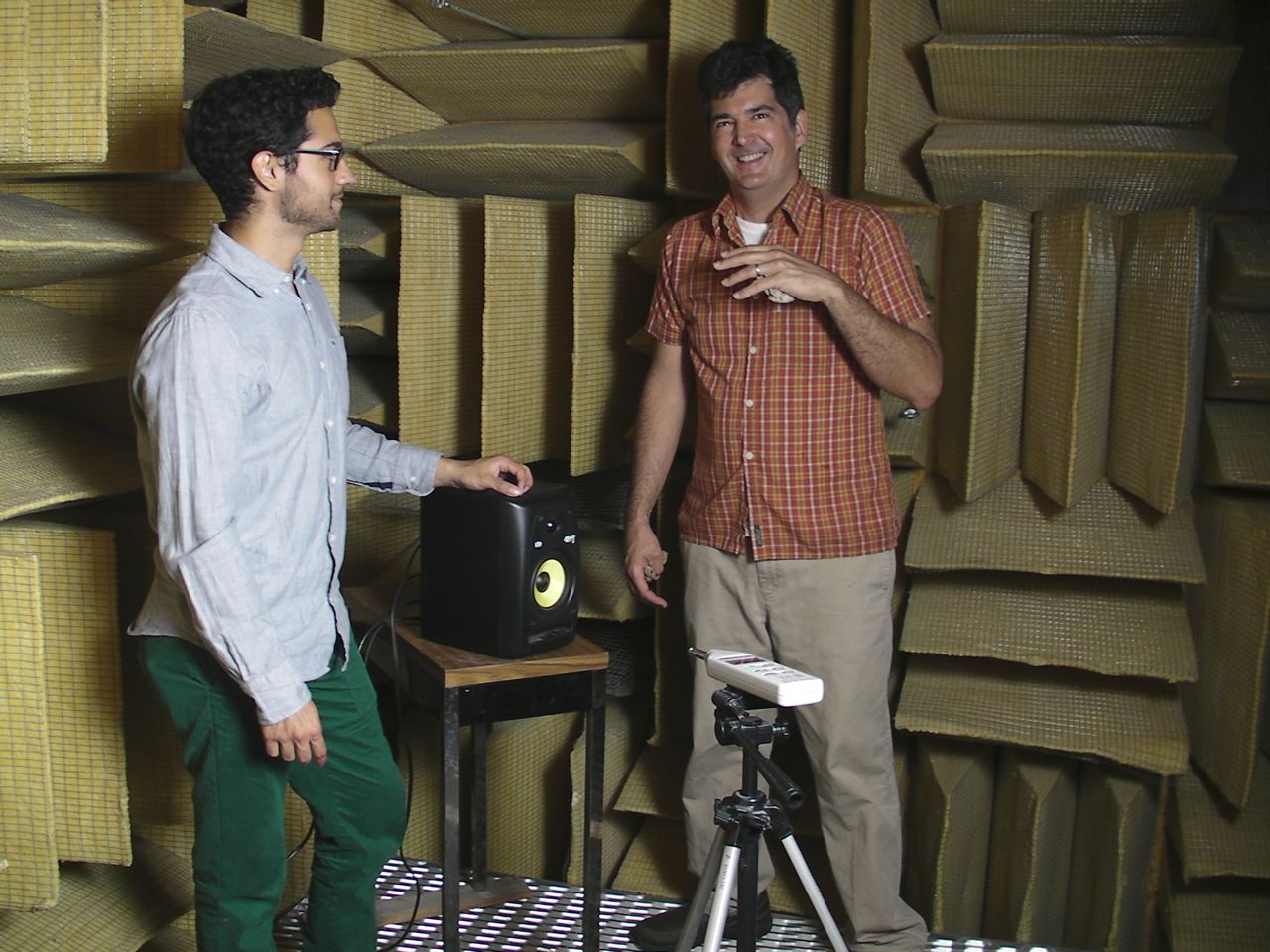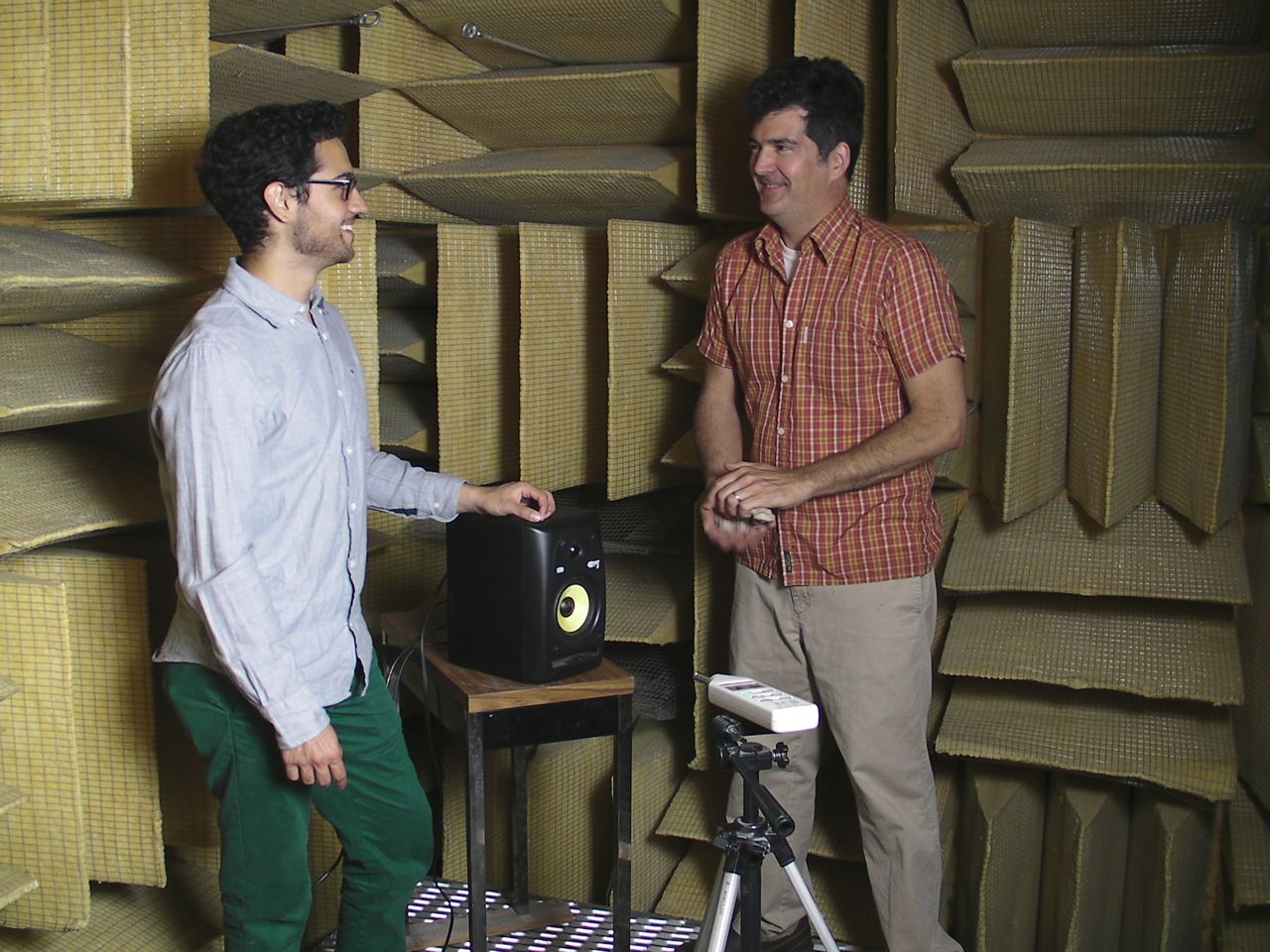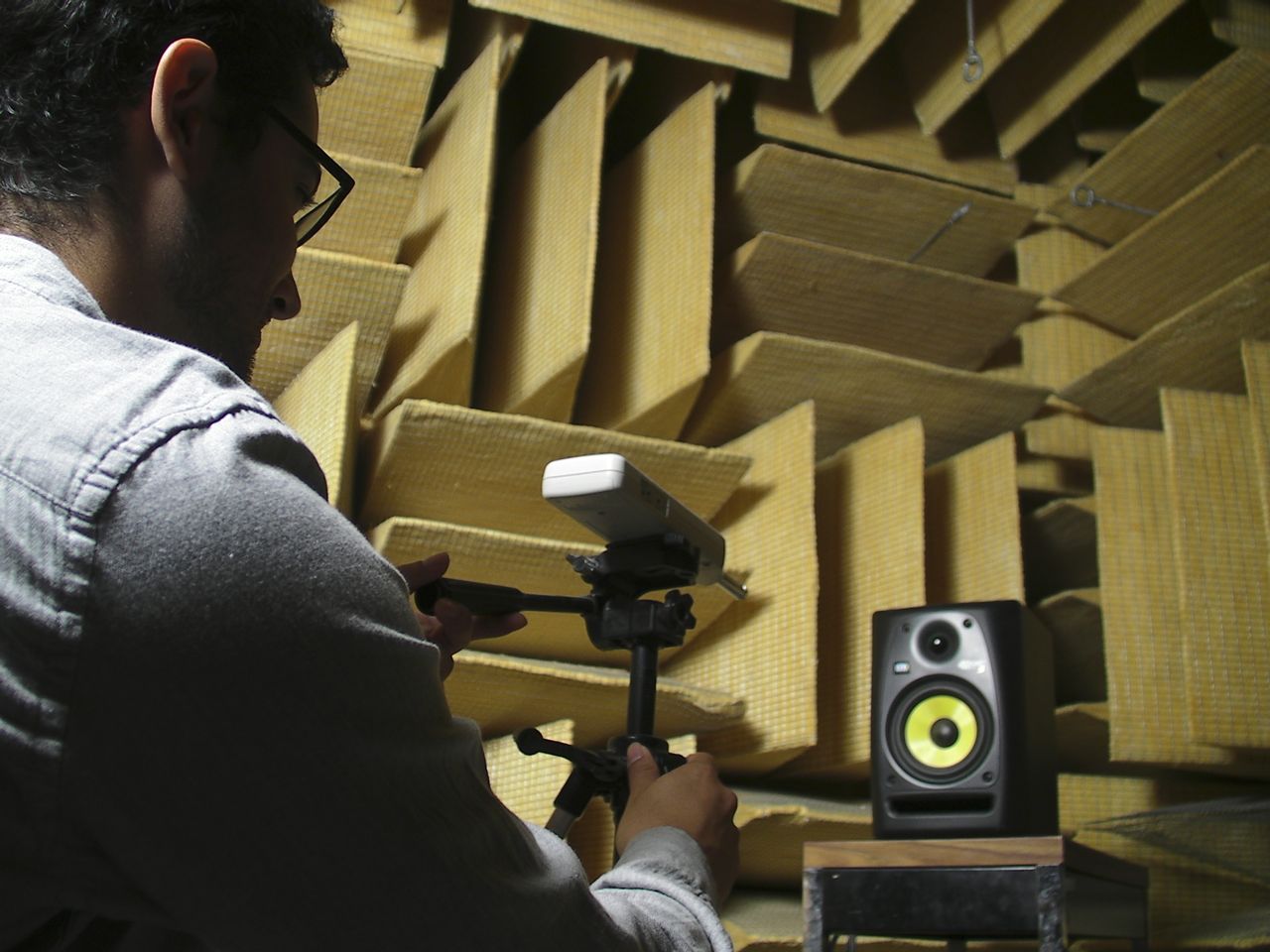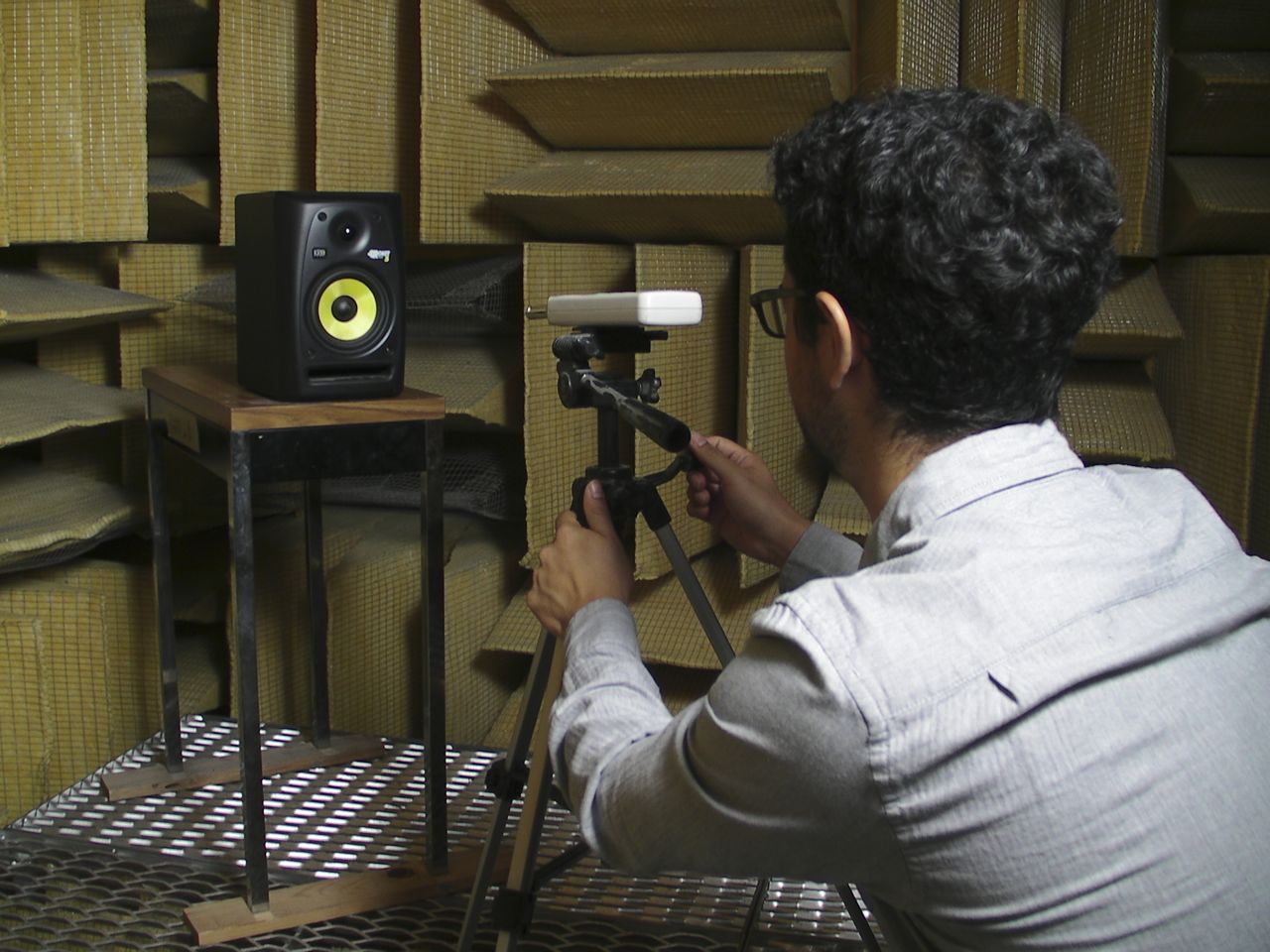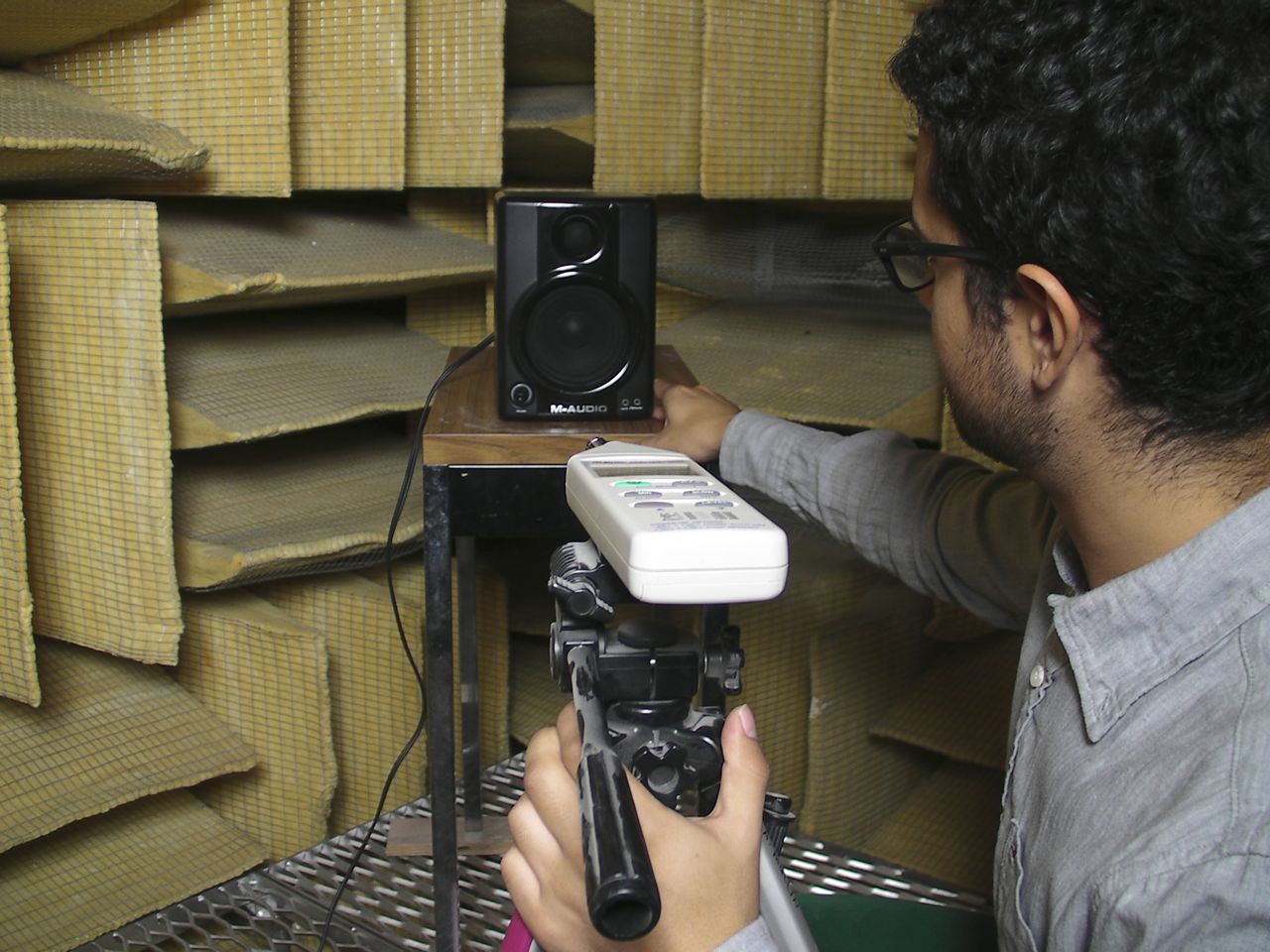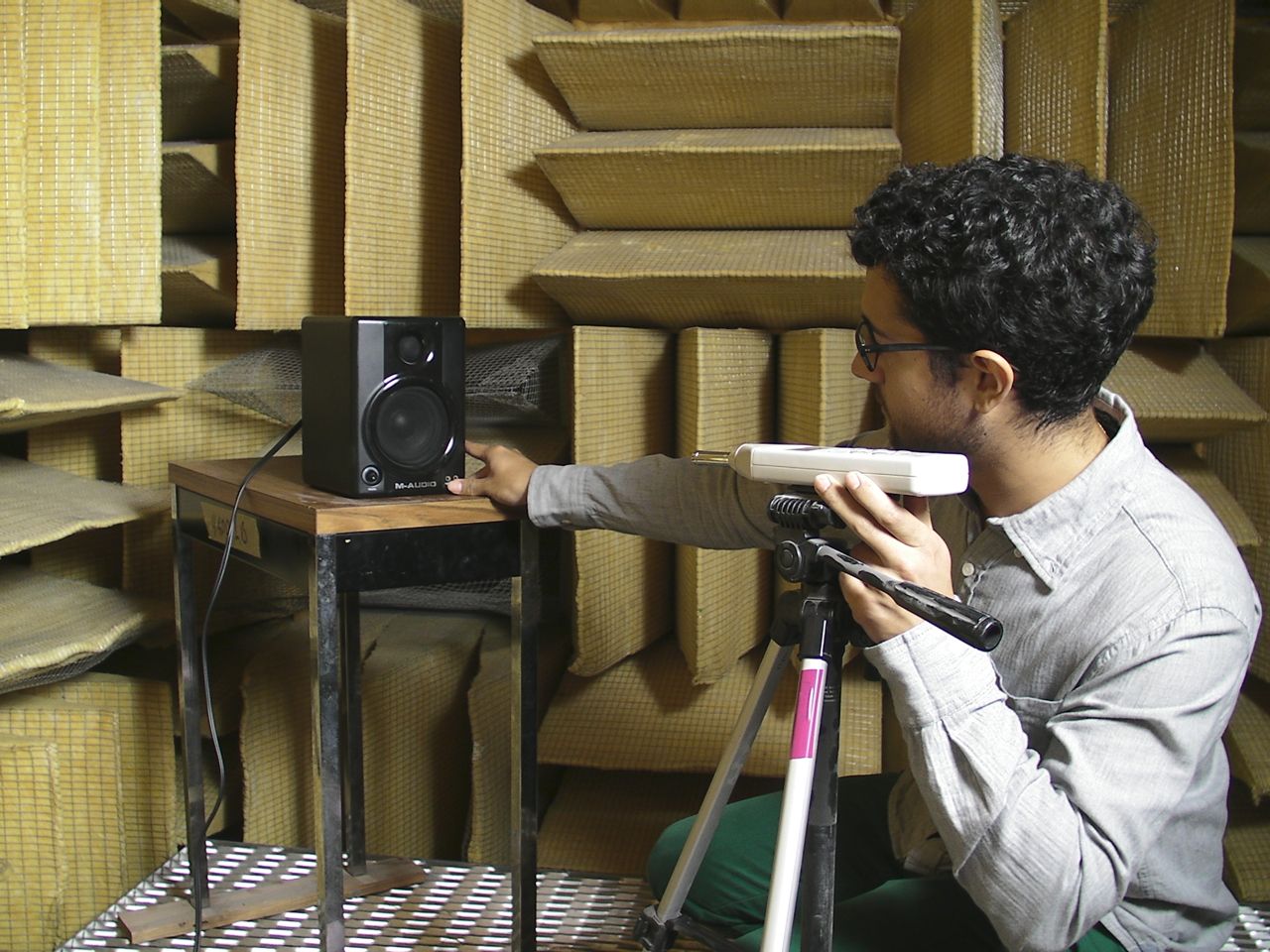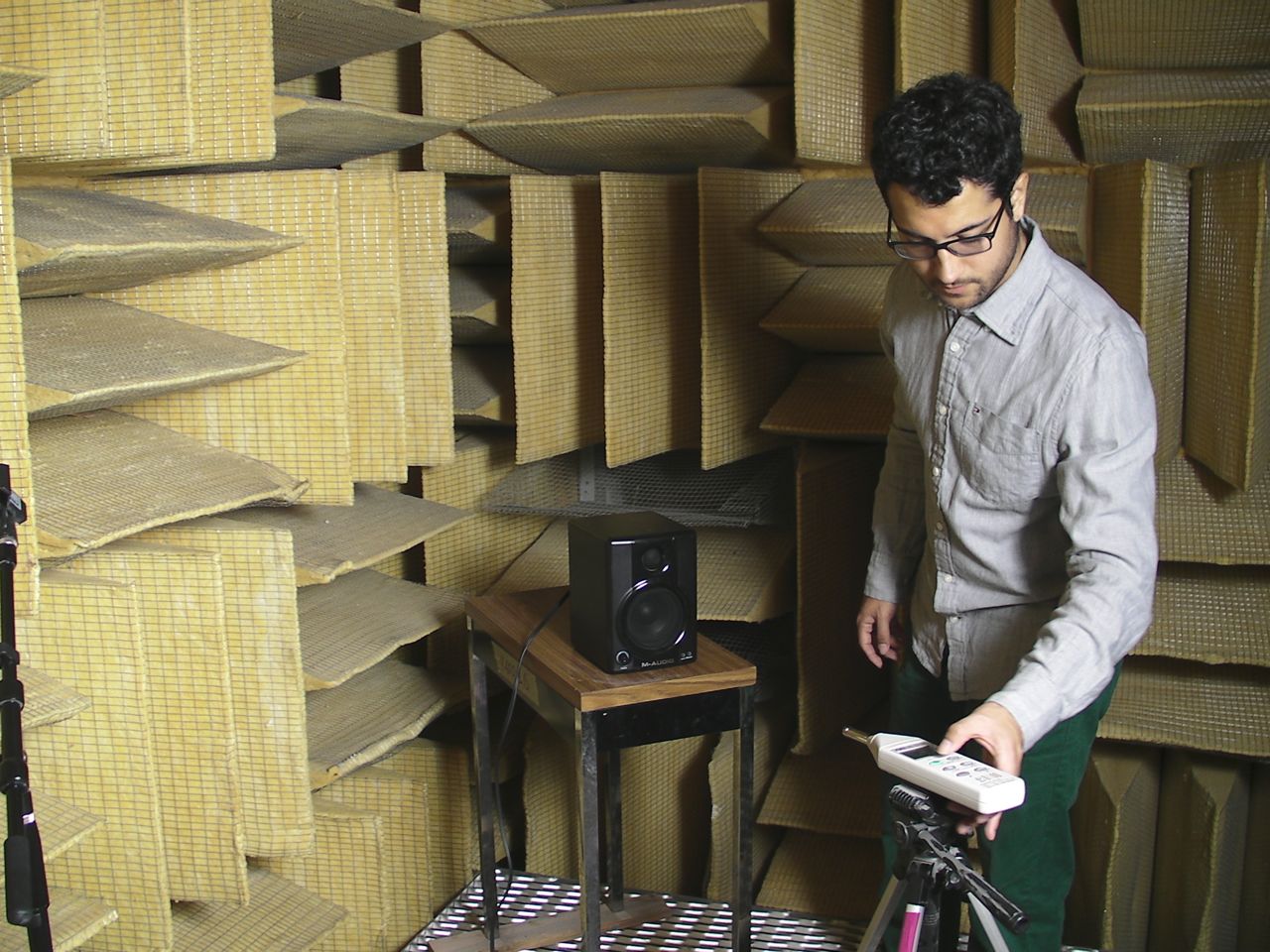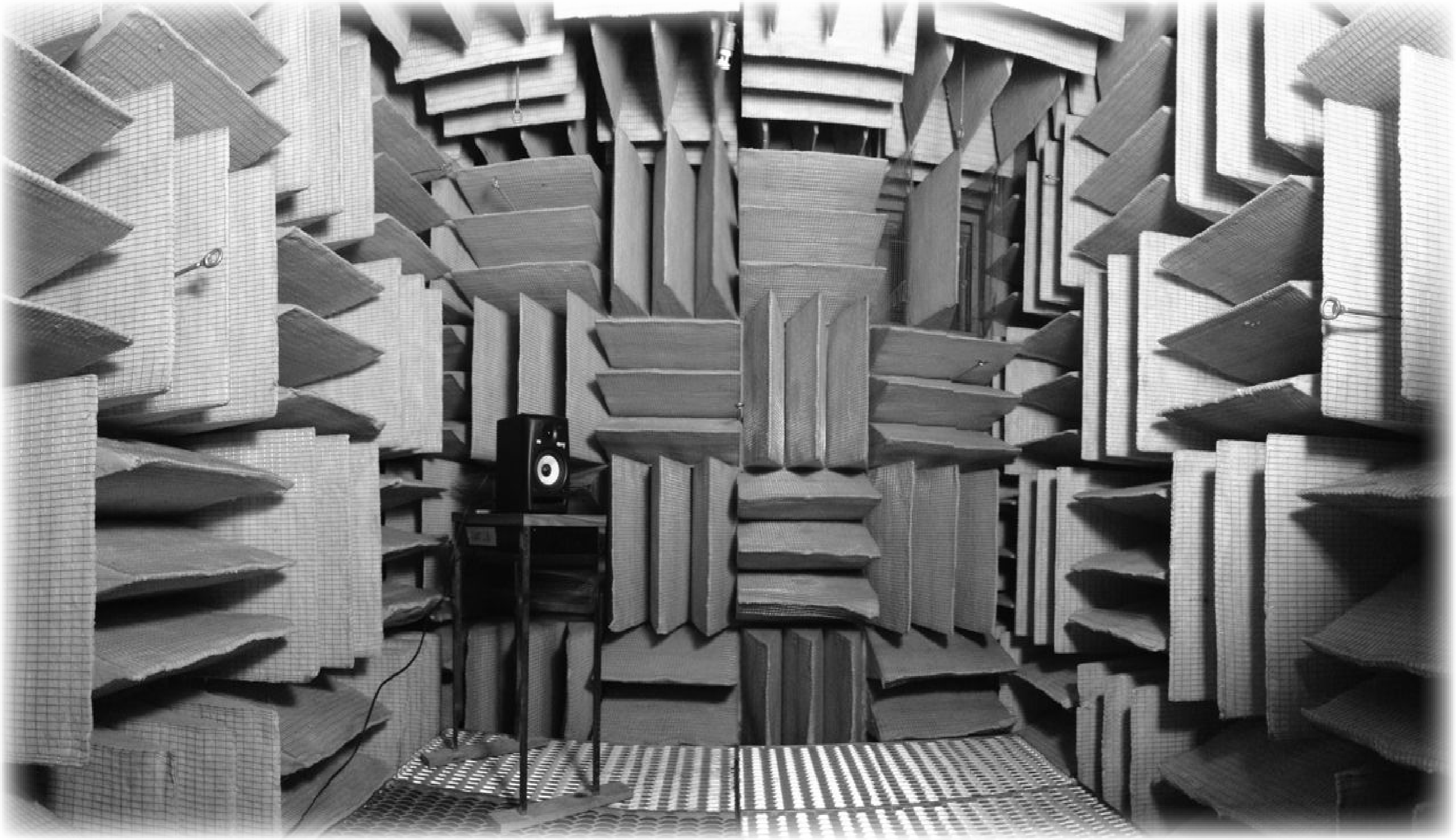An anechoic chamber is a room that has been acoustically tuned to have no reverberation, and no echo. Echoes and reverberation can alter sound significantly. To examen the acoustical properties of an object of interest, it is important to do so in a room free of echoes so as not to alter results. Students and faculty run tests in these anechoic chambers to collect acoustical data on a device while in a controlled environment.
Inside an anechoic chamber, one can lose their sense of space. People may not realize it, but echo and reverberation play a very large role in our spacial localization ability. Humans use the delay time between the sound source hitting one ear and the bounced wave coming from another part of the room to the other ear to distinguish how far away something is, or the depth of space they are in. Without these echoes, it is difficult for the brain to gain a sense of space. As a result, it feels as if you were in a vacuum.
Anechoic chambers are considered to be “the quietest rooms in the world”. When inside an anechoic chamber, the noise floor is very very low, meaning there is virtually no environmental noise. Without a noise floor, other sounds, such as your heart beat, seem to be much louder than usual. Loudness is mostly a psychological phenomena. If a person stays inside an anechoic chamber for an extended period of time, it is possible to hear your own heart beat.
